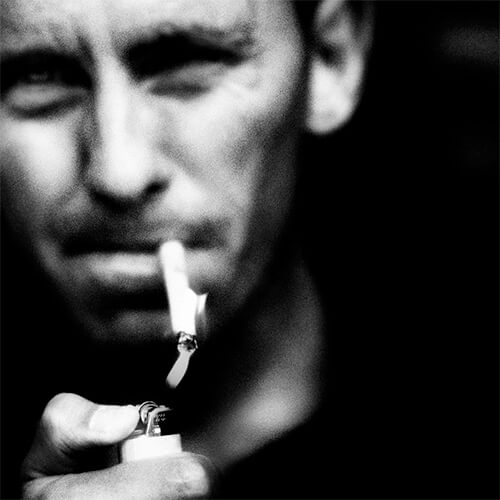Lee Jeffries lives in Manchester in the United Kingdom. Close to the professional football circle, this artist starts to photograph sporting events. A chance meeting with a young homeless girl in the streets of London changes his artistic approach forever. Lee Jeffries recalls that, initially, he had stolen a photo from this young homeless girl huddled in a sleeping bag. The photographer knew that the young girl had noticed him but his first reaction was to leave. He says that something made him stay and go and discuss with the homeless girl. His perception of the homeless completely changes. They become the subject of his art. The models in his photographs are homeless people that he has met in Europe and in the United States:
"Situations arose, and I made an effort to learn to get to know each of the subjects before asking their permission to do their portrait." From then onwards, his photographs portray his convictions and his compassion to the world.
"If you will forgive my indulgence, This work is most definitely NOT photojournalism. Nor is it intended as portraiture. It's religious or spiritual iconography. It's powerful stuff. Jeffries gave these people something more than personal dignity. He gave them a light in their eyes that depicts transcendence, a glimmer of light at the gates of Eden, so to speak. The clarity in their eyes is awesome to behold as if God is somewhere in there. He has made these people into more than poor old broken homeless people lazily waiting for a handout from some urbane and thoughtful corporate agent. He infused them with light, not darkness. Even the blind guy has light pouring from his sightless eyes. I think Jeffries intended his art to honor these people, not pity them. He honors those people by giving their likenesses a greater meaning. He gives them a religious spiritual significance. He imbues them with the iconic soul of humanity. I think that's what he was trying to do, at least to some degree thereof."Source: www.yellowkorner.com
Lee Jeffries leads a double life – as a full-time accountant near Manchester, and in his free time as an impassioned photographer of the homeless all over the world.
A self-taught photographer who started out taking pictures of stock in a bike shop, his epiphany came in April 2008 when, on the eve of running the London Marathon, he snatched a long-lens image of a homeless girl huddling in a doorway, and felt compelled to apologize to her when she called him out for it. Their resulting conversation changed not only his approach to photography; it changed his life.
Since that day Lee has been on a mission to raise awareness of – and funds for – the homeless. His work features street people from the UK, Europe, and the US whom he gets to know by living rough with them, the relationship between them enabling him to capture a searing intimacy and authenticity in his portraits. He has published two critically acclaimed fund-raising books,
Lost Angels and
Homeless, worked with the Salvation Army on a major campaign, and donated the half-dozen cameras he's won in prestigious imaging competitions to charity. He estimates he's given thousands of pounds of his own money to help those he photographs. All this, and he's still 'an amateur'.
Source: Nikon In-Frame
Read Our
Exclusive Interview with Lee Jeffries
